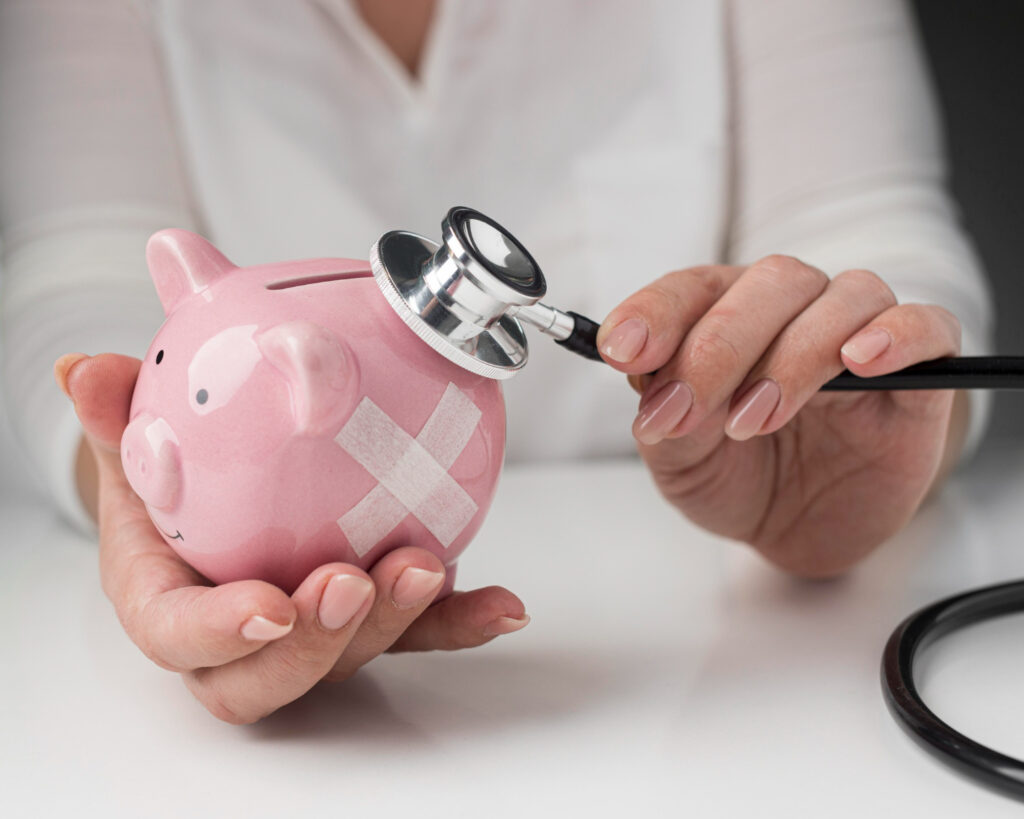Have you ever wondered if you’re brushing your teeth correctly? Or if that late-night snack is really causing cavities? When it comes to oral health, there’s a surprising amount of misinformation circulating that might be affecting your smile without you even knowing it.
According to a survey by the American Dental Association, nearly 80% of Americans believe at least one common dental myth that could potentially harm their oral health. From flossing techniques to whitening products, many of us have been following outdated or simply incorrect advice for years.
Let’s set the record straight on some of the most persistent oral health misconceptions that might be impacting your daily routine.
Myth #1: The Harder You Brush, The Cleaner Your Teeth
“I need to really scrub to get my teeth clean!”
This is perhaps one of the most damaging myths in oral care. Many people believe that aggressive brushing equates to more effective cleaning, but the opposite is true.
The Reality: Brushing too hard can wear down your enamel (the protective outer layer of your teeth) and irritate your gums, potentially leading to recession over time. Dental professionals recommend using a soft-bristled toothbrush and gentle circular motions rather than aggressive back-and-forth scrubbing.
Think of brushing your teeth like polishing a fine piece of jewelry – you want to be thorough but gentle. The plaque on your teeth is soft and loose before it hardens into tartar, so it doesn’t require forceful removal.
Myth #2: Sugar Is The Only Cause of Cavities
“As long as I avoid candy, my teeth will be fine.”
While sugar is certainly a contributor to tooth decay, it’s not working alone.
The Reality: Cavities form when bacteria in your mouth feed on carbohydrates (not just sugar) and produce acid that erodes tooth enamel. Starchy foods like crackers, bread, and chips can be just as problematic as sweet treats because they break down into simple sugars in your mouth.
Additionally, how often you eat matters as much as what you eat. Constant snacking keeps your mouth in an acidic state longer, giving bacteria more opportunity to damage your teeth. This is why dentists often recommend limiting snacking between meals rather than just cutting out sugar.
Myth #3: You Don’t Need to Floss If You Brush Regularly
“My toothbrush reaches all the surfaces of my teeth, so flossing is just extra work.”
This persistent myth leads many people to skip this crucial step in their oral hygiene routine.
The Reality: Your toothbrush simply cannot reach the tight spaces between your teeth or below the gumline. These are exactly the areas where food particles get trapped and plaque builds up, potentially leading to cavities and gum disease.
Flossing removes bacteria and debris from these hard-to-reach places, which is why dentists consistently recommend doing it once a day. For those who find traditional floss difficult to use, water flossers or interdental brushes can be effective alternatives.
Myth #4: White Teeth Are Always Healthy Teeth
“My teeth look white, so they must be healthy!”
The perfection of celebrity smiles has led many to equate whiteness with health.
The Reality: Tooth color varies naturally from person to person, and even off-white teeth can be perfectly healthy. Conversely, pearly white teeth can still have cavities, infections, or structural damage that isn’t visible to the naked eye.
Many whitening procedures only affect the surface appearance without addressing underlying health issues. Some aggressive whitening methods can even damage enamel if used incorrectly or too frequently.
Remember that oral health is about function and freedom from disease – not just aesthetics.
Myth #5: You Should Rinse Your Mouth After Brushing
“I always finish my brushing routine with a thorough rinse to get rid of toothpaste.”
This seemingly logical step is actually counterproductive to optimal oral health.
The Reality: Most toothpastes contain fluoride, which helps strengthen tooth enamel and prevent decay. When you rinse immediately after brushing, you wash away this beneficial compound before it has a chance to work effectively.
Dental professionals recommend spitting out excess toothpaste but avoiding rinsing for at least 30 minutes after brushing. This allows the fluoride to remain in contact with your teeth longer, maximizing its protective benefits.
Myth #6: Baby Teeth Don’t Matter Since They Fall Out Anyway
“Why worry about cavities in baby teeth? They’re temporary!”
This dangerous misconception can lead to neglect of children’s oral health.
The Reality: Primary (baby) teeth serve crucial functions in a child’s development. They maintain space for permanent teeth, aid in proper speech development, and contribute to facial structure formation. Infections or early loss of baby teeth can lead to alignment problems when adult teeth come in.
Additionally, establishing good oral hygiene habits early helps children develop lifelong patterns of dental care. Treating children’s teeth as important from the beginning sets them up for better oral health throughout life.
Myth #7: Mouthwash Is A Substitute For Brushing
“No time to brush? A quick swish of mouthwash will do the trick!”
The convenience of mouthwash makes this an appealing myth, but it’s simply not true.
The Reality: While antiseptic mouthwashes can help reduce bacteria in your mouth, they cannot remove plaque – the sticky film that builds up on teeth and leads to decay. Mechanical cleaning through brushing and flossing is essential for removing this biofilm.
Mouthwash works best as a supplement to proper brushing and flossing, not as a replacement. It can reach areas that might be missed during brushing and provide additional benefits like fluoride delivery or breath freshening, but it should never be your only oral hygiene measure.
Myth #8: You Only Need to See a Dentist When You Have Pain
“If nothing hurts, why spend time and money at the dentist?”
This might be the most costly myth in terms of long-term oral health.
The Reality: Many dental problems, including early-stage gum disease and cavities, develop without causing noticeable pain until they’re significantly advanced. Regular dental check-ups allow for early detection and treatment of issues before they become painful, extensive, and expensive to fix.
Professional cleanings also remove hardened tartar that cannot be eliminated through home care alone. Most dental professionals recommend visits every six months, though individual needs may vary based on your specific risk factors.
Myth #9: Natural Remedies Are Always Better Than Commercial Products
“I use baking soda and activated charcoal because they’re natural and therefore safer.”
The appeal of natural solutions is understandable, but not all natural remedies are effective or safe for oral care.
The Reality: Some natural products, like baking soda, can be overly abrasive and damage tooth enamel when used incorrectly. Others, like lemon juice for whitening, contain acids that erode dental structures. Activated charcoal, despite its popularity, lacks substantial scientific evidence for its effectiveness and safety in oral care.
Commercial toothpastes and mouth rinses undergo testing for both safety and efficacy. They typically contain precisely measured amounts of ingredients like fluoride that have been proven beneficial for oral health through extensive research.
If you’re interested in natural options, discuss them with your dental professional to ensure they’re appropriate for your specific needs.
Myth #10: Oral Health Is Separate From Overall Health
“What happens in my mouth stays in my mouth.”
This misconception overlooks the important connections between oral health and the rest of your body.
The Reality: Research increasingly shows that oral health is intimately connected with overall health. Gum disease has been linked to various systemic conditions, including heart disease, diabetes, respiratory infections, and adverse pregnancy outcomes.
The mouth can serve as both a source of infection and a window into your general health status. Many systemic diseases, including diabetes and HIV, often show their first signs as oral symptoms.
Maintaining good oral health isn’t just about having a nice smile – it’s an important component of your total wellness.
Creating Better Oral Health Habits
Now that we’ve debunked these common myths, you might be wondering how to adjust your routine. Here are some evidence-based practices to optimize your oral health:
- Brush gently but thoroughly twice a day using a soft-bristled toothbrush
- Floss or use interdental cleaners once daily
- Limit snacking between meals to reduce acid exposure
- Wait at least 30 minutes after eating acidic foods before brushing
- Spit out toothpaste after brushing but delay rinsing
- Schedule regular dental check-ups (typically every 6 months)
- Replace your toothbrush every 3-4 months or when bristles become frayed
- Consider using fluoride toothpaste unless directed otherwise by your dental professional
The Bottom Line
In the age of social media trends and quick-fix solutions, it’s easy to fall prey to oral health misconceptions. By separating fact from fiction, you can make informed decisions about your daily routine and avoid practices that might inadvertently harm your teeth and gums.
Remember that dental health is highly individual – what works for one person may not be ideal for another. The best approach is to discuss your specific needs with your dental care provider and develop a personalized plan based on current scientific evidence rather than hearsay or tradition.
Your smile is worth the effort of getting the facts straight!

Disclaimer: This article is intended for informational purposes only and should not be construed as professional dental advice. The content provided is general in nature and may not be applicable to individual situations. Always consult with a qualified dental professional regarding your specific oral health needs, concerns, or conditions.
Sources: American Dental Association, Journal of the American Dental Association, National Institute of Dental and Craniofacial Research, and dental professional interviews. This content was last reviewed May 2025.



